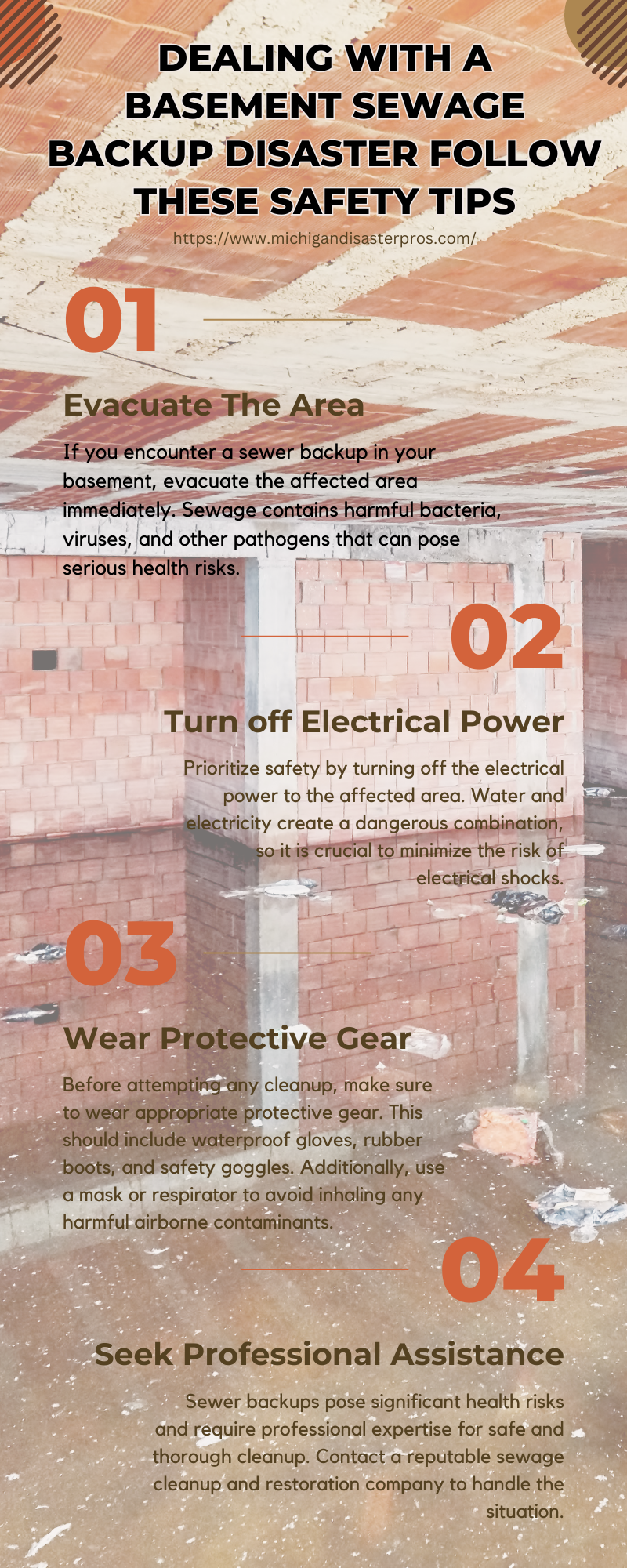Basement flooding is one of every homeowner’s biggest nightmares. One of the leading problems occurs when a drain line backs up and leads to a sewage overflow through your drains and toilets. Dealing with a sewer backup in your basement requires taking proper safety precautions to protect yourself and minimize health risks.
Stay Safe When You Have a Sewage Backup By Following These Tips
- Evacuate the area: If you encounter a sewer backup in your basement, evacuate the affected area immediately. Sewage contains harmful bacteria, viruses, and other pathogens that can pose serious health risks. Restrict access to the contaminated area and ensure that children and pets are kept away to avoid exposure.
- Turn off electrical power: Prioritize safety by turning off the electrical power to the affected area. Water and electricity create a dangerous combination, so it is crucial to minimize the risk of electrical shocks. If you are uncertain about how to safely turn off the power, contact a qualified electrician for assistance.
- Wear protective gear: Before attempting any cleanup, make sure to wear appropriate protective gear. This should include waterproof gloves, rubber boots, and safety goggles. Additionally, use a mask or respirator to avoid inhaling any harmful airborne contaminants.
- Seek professional assistance: Sewer backups pose significant health risks and require professional expertise for safe and thorough cleanup. Contact a reputable sewage cleanup and restoration company to handle the situation. They have the necessary equipment, expertise, and protective gear to effectively remove the sewage, disinfect the area, and restore your basement to a safe condition.
Remember, the health and safety of yourself and your family should always be the top priority when dealing with a sewer backup. Taking the proper precautions and seeking professional assistance (MichiganDisasterPros) will help minimize health risks and ensure a thorough and safe cleanup process.

